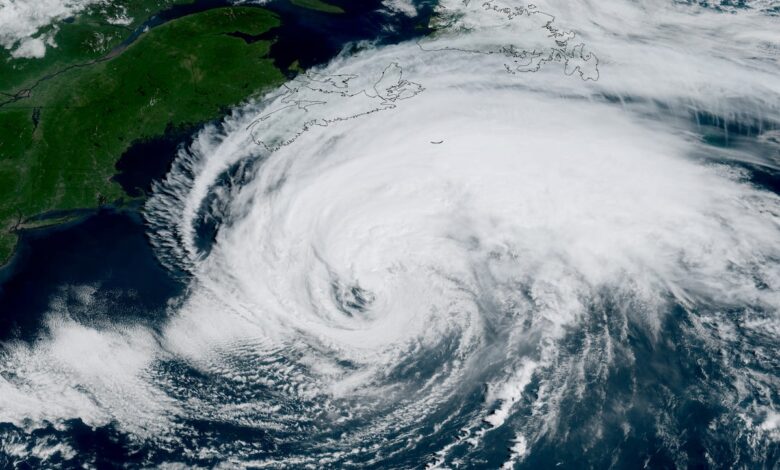Hurricane in it could make fire fighting in Atlantic region more difficult

A Powerful Storm Impacts Fire Fighting Efforts in Atlantic Provinces
Hurricane in the Atlantic Ocean on Friday, August 22.CSU/CIRA-NOAA/The Canadian Press
A powerful storm moving through the Atlantic Ocean is posing a risk to fire fighting efforts in Newfoundland and Labrador and Nova Scotia, but officials in both provinces assure they are prepared for the challenges ahead.
Impact on Fire Fighting Efforts
The storm, previously classified as a hurricane, has been downgraded to a post-tropical cyclone by the National Hurricane Center in Miami. While it is expected to stay offshore on Friday and Saturday, it may bring northeastern winds to central and western Nova Scotia, where wildfires have already led to the evacuation of approximately 100 homes. Firefighters are on high alert as sudden shifts in wind direction could pose a threat to their safety.
Rainfall from the storm, ranging between 50 and 100 millimeters, would have been beneficial in extinguishing the fires, according to meteorologist Bob Robichaud from Environment Canada. However, the current situation presents a unique challenge as it marks the first time in his 21-year career as a meteorologist that he has witnessed a hurricane and a natural fire simultaneously.
In Newfoundland and Labrador, Prime Minister John Hogan emphasized the potential impact of strong winds from the storm on firefighting efforts. While rain would be welcomed, high winds could complicate the situation. The proximity of the storm, located approximately 500 km southwest of Sable Island, NS, with maximum sustained winds of 148 km/h, raises concerns for both provinces.
Challenges Faced by Firefighters
Jim Rudderham, director of fleet and forest protection, echoed Robichaud’s sentiments, highlighting the unprecedented nature of battling both a natural fire and a hurricane simultaneously. Despite the challenges, firefighting teams are adapting their strategies to align with the changing weather conditions.
Scott Tingley, from the Department of Natural Resources, emphasized the complexity of addressing the Long Lake Wildfire, citing factors such as drought conditions, fire intensity, and the terrain. The wildfire has already consumed over 32 square kilometers of land, underscoring the urgency of the situation.
Assessment and Response
Efforts are underway to assess the impact of the storm on fire fighting in New Brunswick, where 18 active fires have been reported. Meanwhile, in Newfoundland, the Kingston Fire continues to burn, resulting in an estimated 101 square kilometers of devastation and the displacement of thousands of residents.
Authorities are closely monitoring the situation and coordinating evacuation efforts to ensure the safety of affected communities. As the storm progresses, the resilience and adaptability of firefighting teams will be put to the test in mitigating the impact of both the natural fire and the hurricane.
Stay tuned for further updates on the evolving situation as officials work tirelessly to protect lives and properties in the face of this dual threat.
Original content referenced from Associated Press



